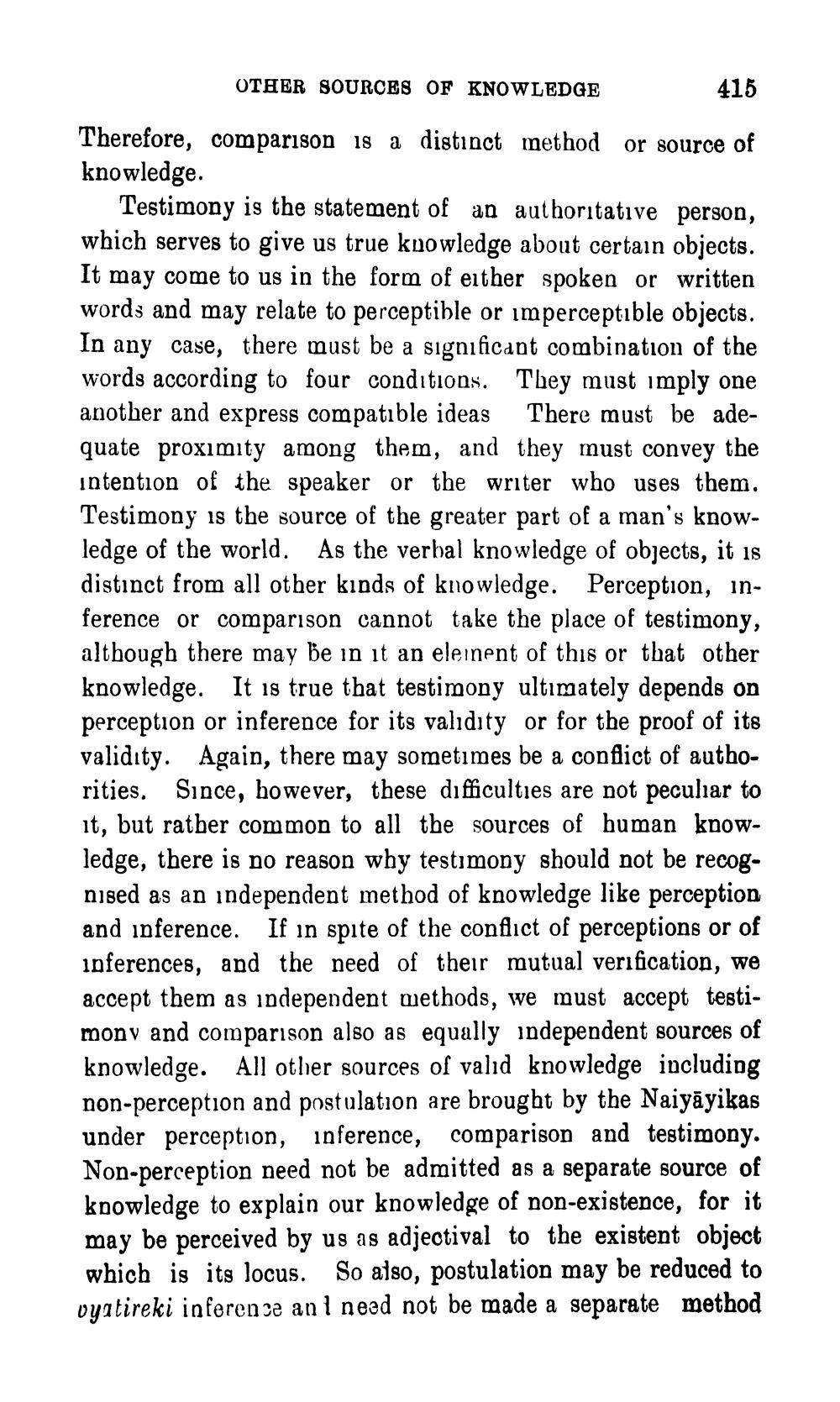________________
OTHER SOURCES OF KNOWLEDGE
Therefore, comparison is a distinct method knowledge.
415
or source of
Testimony is the statement of an authoritative person, which serves to give us true knowledge about certain objects. It may come to us in the form of either spoken or written words and may relate to perceptible or imperceptible objects. In any case, there must be a significant combination of the words according to four conditions. They must imply one another and express compatible ideas There must be adequate proximity among them, and they must convey the intention of the speaker or the writer who uses them. Testimony is the source of the greater part of a man's knowledge of the world. As the verbal knowledge of objects, it is distinct from all other kinds of knowledge. Perception, inference or comparison cannot take the place of testimony, although there may be in it an element of this or that other knowledge. It is true that testimony ultimately depends on perception or inference for its validity or for the proof of its validity. Again, there may sometimes be a conflict of authorities. Since, however, these difficulties are not peculiar to it, but rather common to all the sources of human knowledge, there is no reason why testimony should not be recognised as an independent method of knowledge like perception and inference. If in spite of the conflict of perceptions or of inferences, and the need of their mutual verification, we accept them as independent methods, we must accept testimony and comparison also as equally independent sources of knowledge. All other sources of valid knowledge including non-perception and postulation are brought by the Naiyayikas under perception, inference, comparison and testimony. Non-perception need not be admitted as a separate source of knowledge to explain our knowledge of non-existence, for it may be perceived by us as adjectival to the existent object which is its locus. So also, postulation may be reduced to vyatireki inference ani need not be made a separate method




